This post may contain affiliate sales links. Please read my disclosure policy.
Ready to learn all about how to soften butter? It’s a crucial step in many baking recipes that is often overlooked or done incorrectly. Let me walk you through why it’s important and 6 different ways to do it.
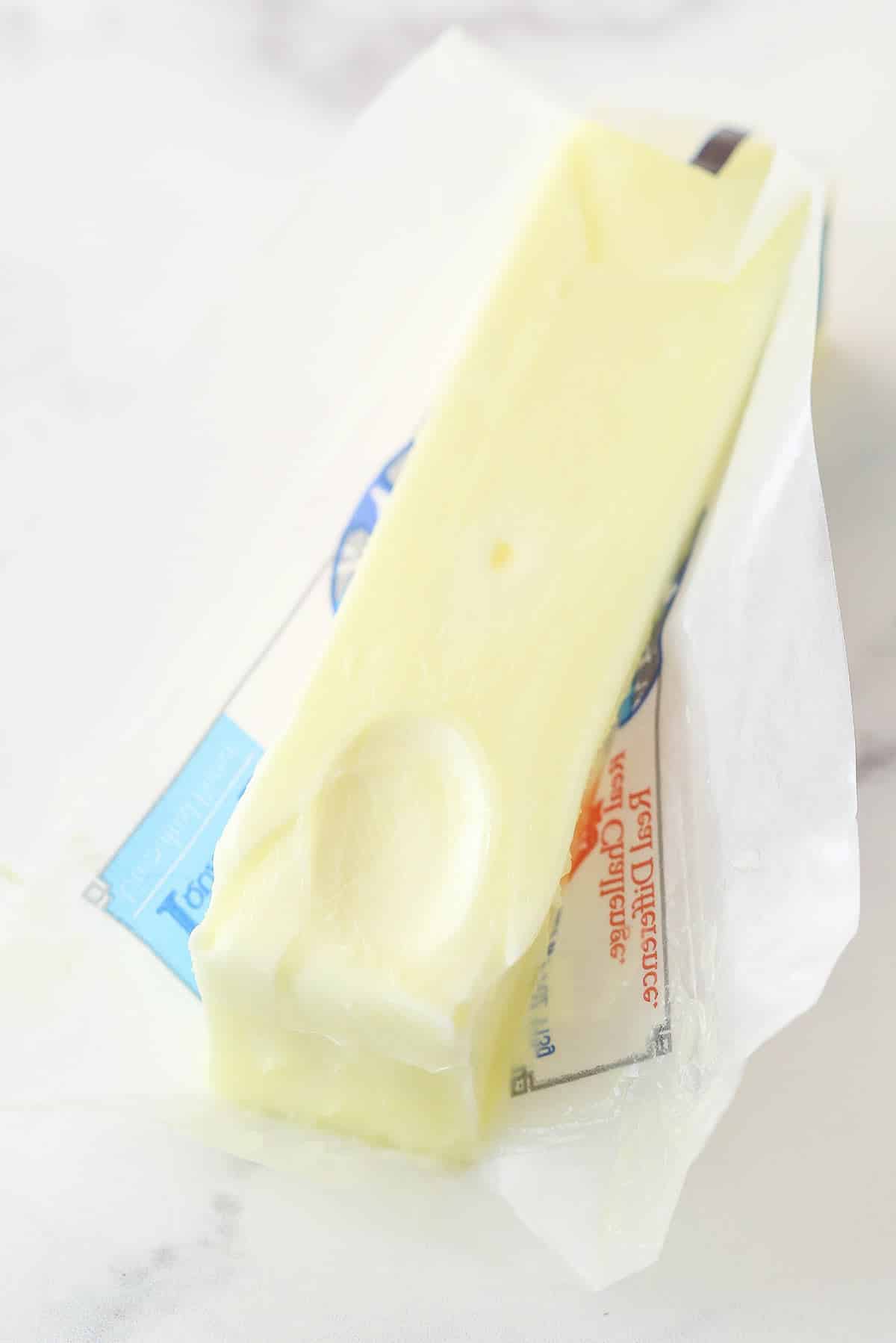
The Best Way to Soften Butter
It’s a frequently overlooked or poorly done step in countless baking recipes. Have you ever wondered why your baked good came out flat? Or why your batter or dough didn’t whip up properly? It’s very possible that it had something to do with the butter.
When you cream butter and sugar at the beginning of a recipe, you are actively incorporating air into the dough or batter. That air plays a significant role in making your baked goods light and fluffy. Starting with overly cold or overly melted butter will ruin the butter’s capacity to incorporate air. So pay attention to the following tips and tricks on how to melt butter unless you want a dense bread, cookie, cake, or [insert your favorite baked good here].
Why Would You Need to Soften Butter?
When baking with butter, it is often a crucial step to soften it before incorporating it into the recipe. Why? Because many recipes require that you beat (or cream) the butter (often with sugar). This process incorporates air into the dough or batter which plays an important role in adding loft to the end product. Cold butter will not cream well with the other ingredients.
Room Temperature Butter is Colder Than You Think
Note the difference between softening and melting. It is important not to soften your butter to the point of melting. You just want it to come to room temperature. Room temperature butter tends to be around 65 degrees F (which is actually cooler than most kitchens). If it gets much warmer than that, it will start to melt. Melted butter will not incorporate air as well as room temperature butter and will likely end you with a dense finished product.
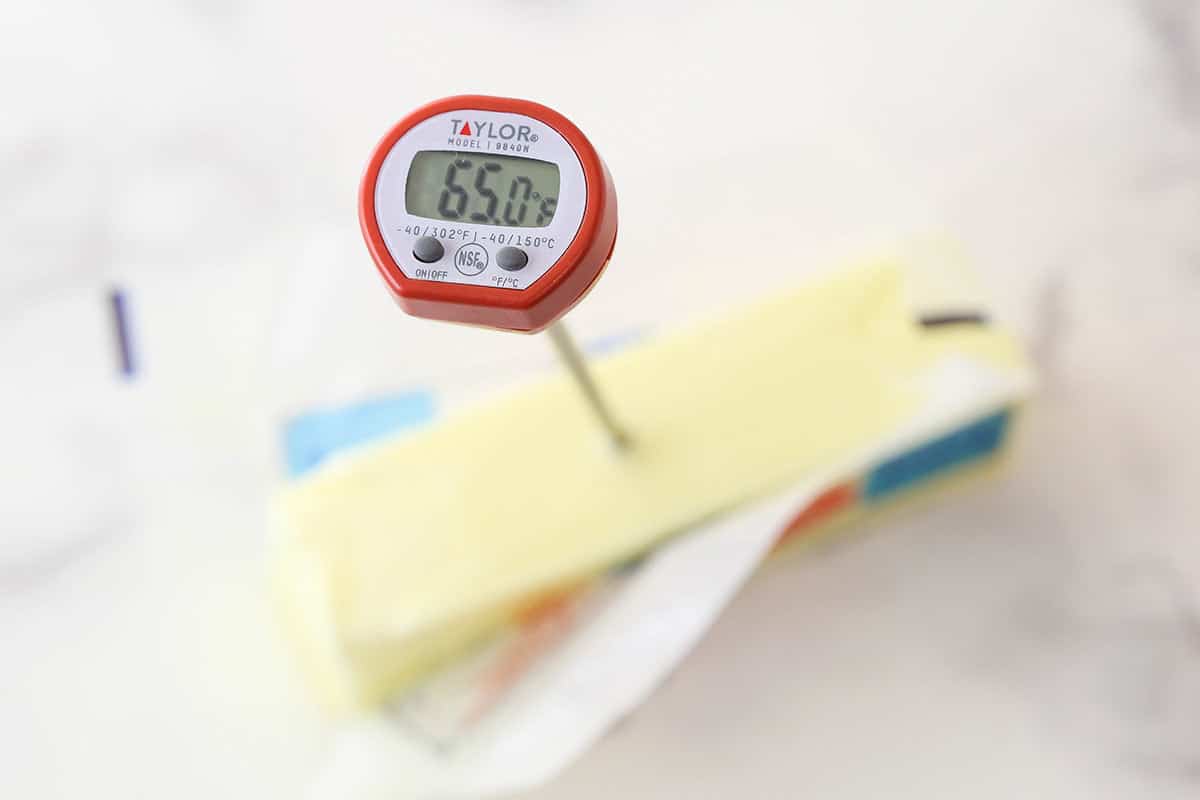
How to Soften Butter
Now that you know why softening butter is a crucial step in preparing baked goods, it’s time to learn how to do it. There are many ways to skin the cat here. I have listed them here (along with a how-to for each), starting with the method that takes the longest amount of time and ending with the one that takes the least amount of time.
Countertop
This is perhaps the most common method of softening butter. It happens to be the slowest but it is also my favorite. Gradually softening the butter at room temperature allows the butter to maintain its texture. You just have to remember to plan an hour or two ahead. Here’s how to do it.
- Remove the butter from the fridge and place it on the counter, still wrapped.
- Allow the butter to sit for 1-2 hours.
- Note. Leaving the butter out for too long (several days) can cause the butter to go rancid. So don’t think too far ahead.

Cubing and Slicing
Another method that will not change the texture of the butter is cubing or slicing it and allowing it to soften at room temperature. It only takes about 15 minutes and produces excellent results.
- Unwrap the butter and cut it into 1/2 inch cubes OR 1/4 inch slices and place it in a bowl on the countertop.
- Let the butter sit for about 20 minutes. Check the consistency before using it. Depending on the temperature of your kitchen, it may need a bit more time.
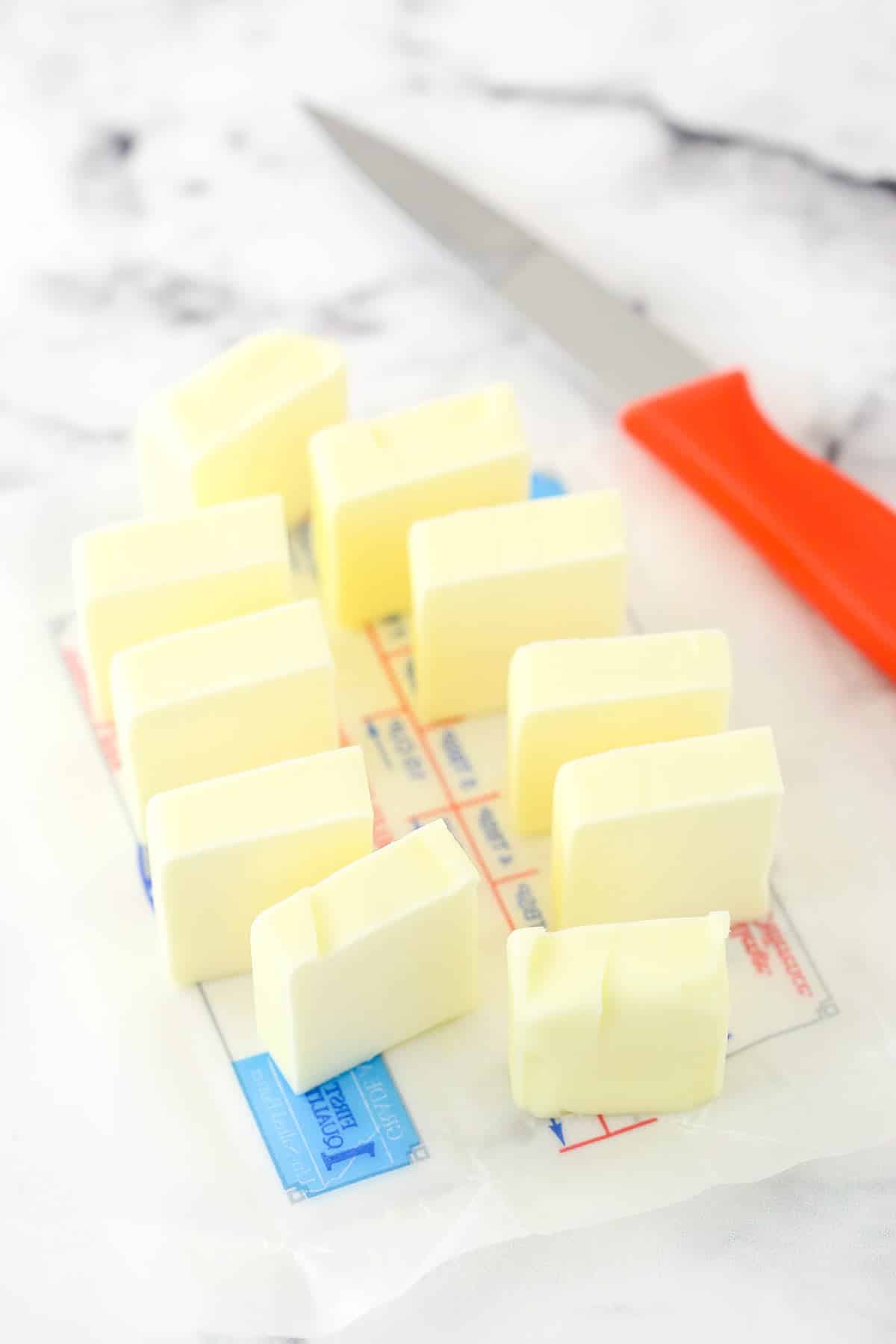
Shredding
This is one of the fastest ways to soften butter. I like it a lot because, just like the counter method, the mason jar method, and the cubing method, it does not change the texture of the butter. Plus it’s lightning fast and the small pieces of butter incorporate beautifully with other ingredients. Here’s how to soften butter using the grating method.
- Just as you would a block of cheese, rub the unwrapped stick of butter against the grate of a box grater.
- Use it right away.

Mason jar method
You can also place your butter in a warm mason jar and achieve results similar to the countertop method in a fraction of the time. I love this method because it is relatively quick and it doesn’t change the texture of the butter. Here’s how to do it.
- Fill a mason jar with water and microwave for a couple of minutes before discarding the water.
- Stand the wrapped, cold butter on a plate and cover it with the warm mason jar.
- Let the butter sit for about 10 minutes.
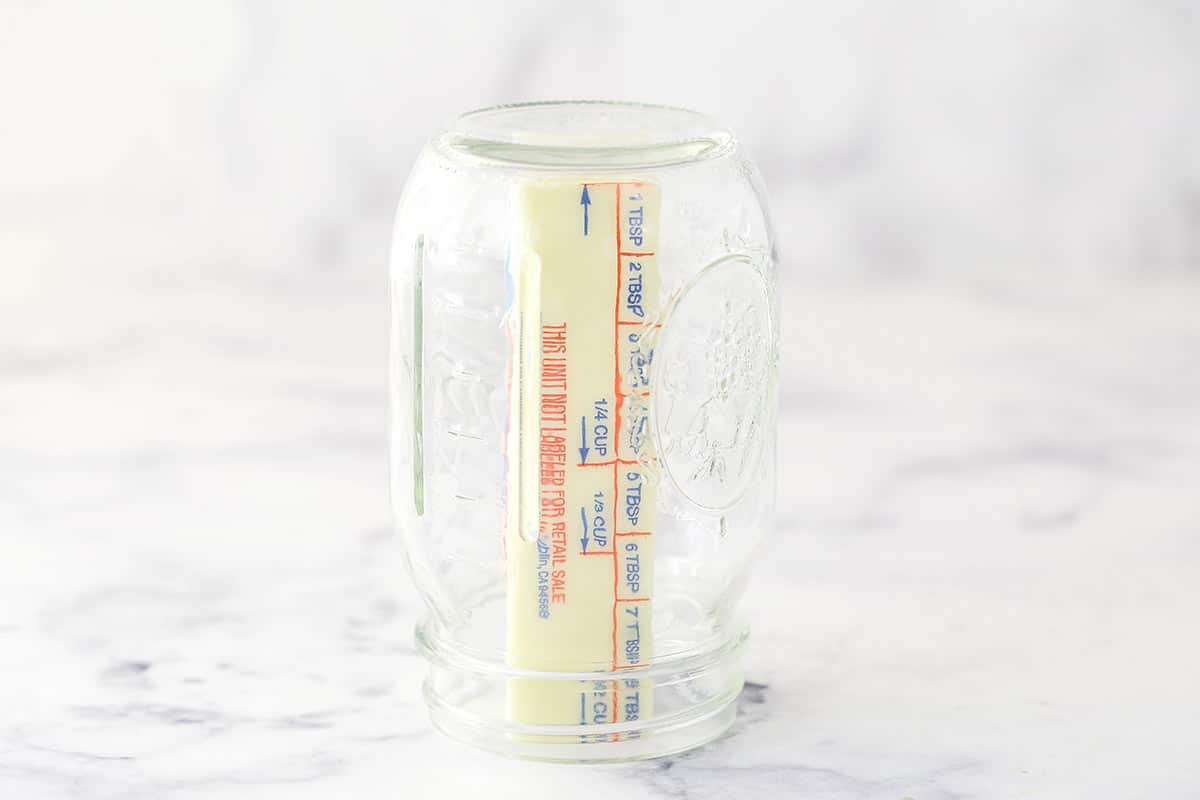
Pounding
An efficient, yet slightly less favorable method of softening butter is pounding it into a thin sheet. This method exposes plentiful surface area to room temperature, allowing the butter to soften very quickly. This method will change the texture of the butter, so proceed with caution. Here’s how you do it.
- Unwrap the butter and place it between 2 pieces of plastic wrap.
- Pound the butter into a thin sheet (use a kitchen mallet or a rolling pin).
- Let the butter sit for 5 minutes before removing the plastic wrap and adding it to your recipe.
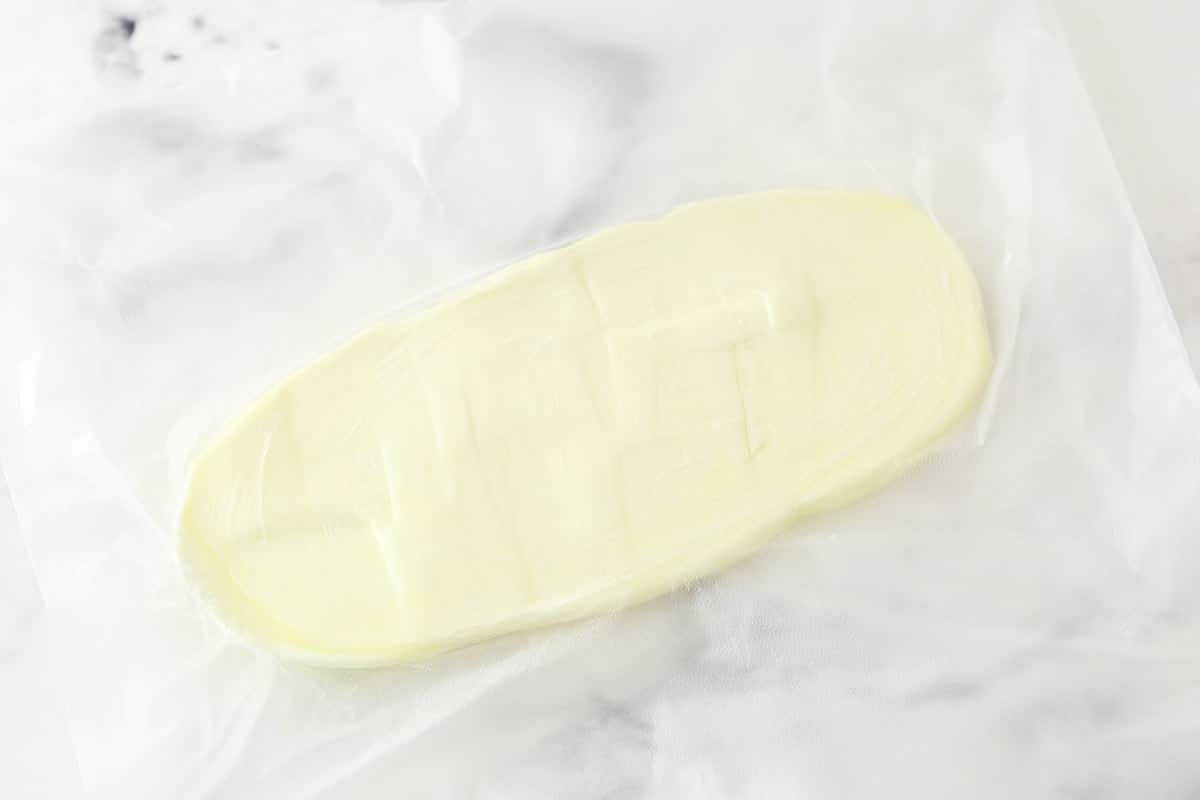
In the microwave
This is one of the quickest, most hassle-free ways to soften butter. But you do have to be careful. Not only can the microwave soften the butter unevenly, but just a bit too much time in the microwave can result in melted butter that won’t hold air properly in your recipe. Here’s how to do it as successfully as possible.
- Leave the butter wrapped and cut it 1/2 inch sticks in half so that they are only 1/4 of a cup.
- Place the sticks directly onto the microwave turntable, evenly spaced. Don’t place any directly in the middle.
- Microwave the butter for 5 seconds, then rotate to the next side. Microwave for another 5 seconds. Continue rotating the butter to the next side and microwaving for only 5 seconds at a time until the butter is softened to the right consistency. It should only take about 30 seconds of microwaving time.
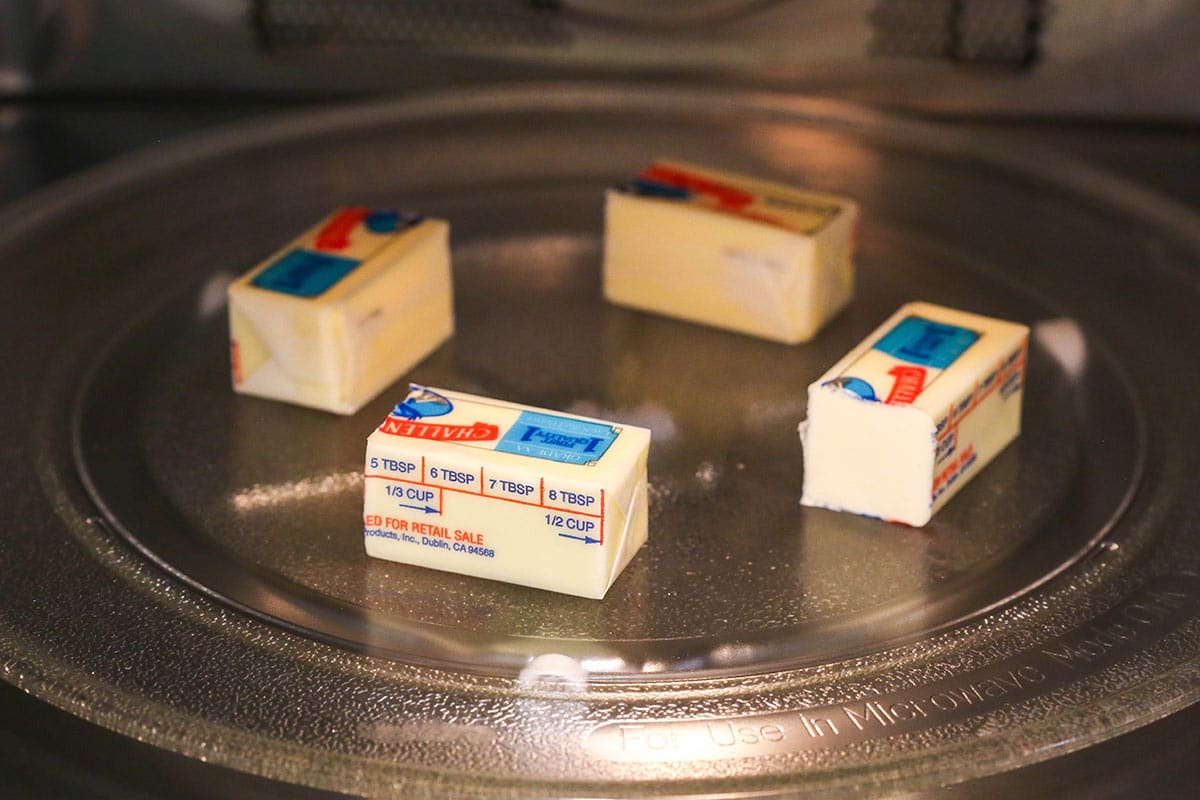
What is the Fastest Way to Soften Butter?
If I’ve planned ahead well enough, leaving the butter on countertop is definitely the best way to go. If I find myself in a crunch for time and I’m just ready to pop something in the oven, the quickest method is either the microwave, cubing/slicing or the shredding method. You do have to be a little careful with the microwave, so cubing or shredded the butter might best.
An additional benefit of the shredding method is that you can add the butter to a recipe even if it is still a little cool and it should incorporate nicely with the other ingredients due to the small size of the shreds.
More Must-Know Baking Tips
I hope this post about how to soften butter has been educational. Baking is a science and it is important to learn as much as you can about it in order to achieve the best results possible. Here are a few other useful posts that will help you reach your full potential as a baker.












This was SO helpful! Thank you!
Awesome! I’m so glad it was helpful!
Thank you for the tip